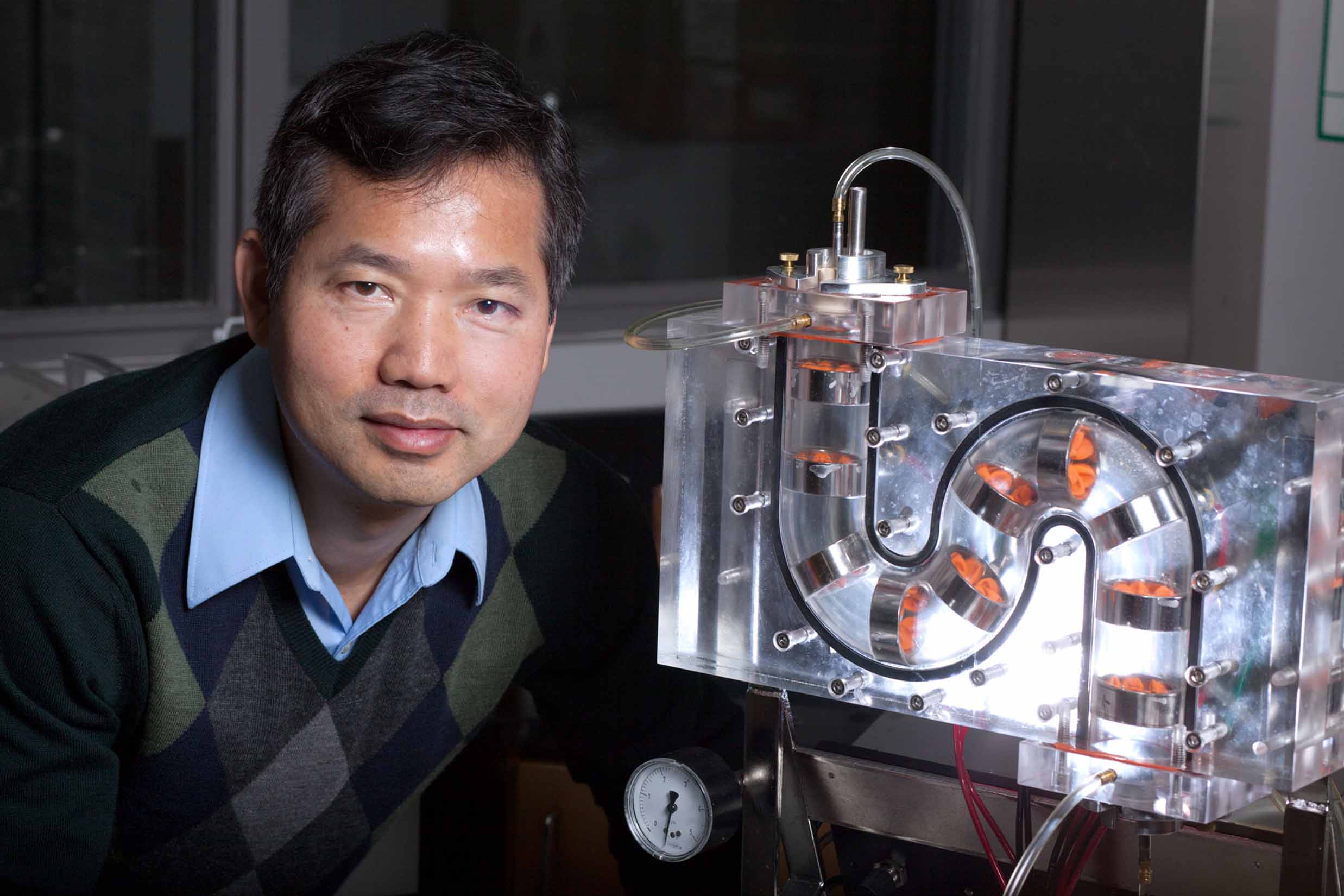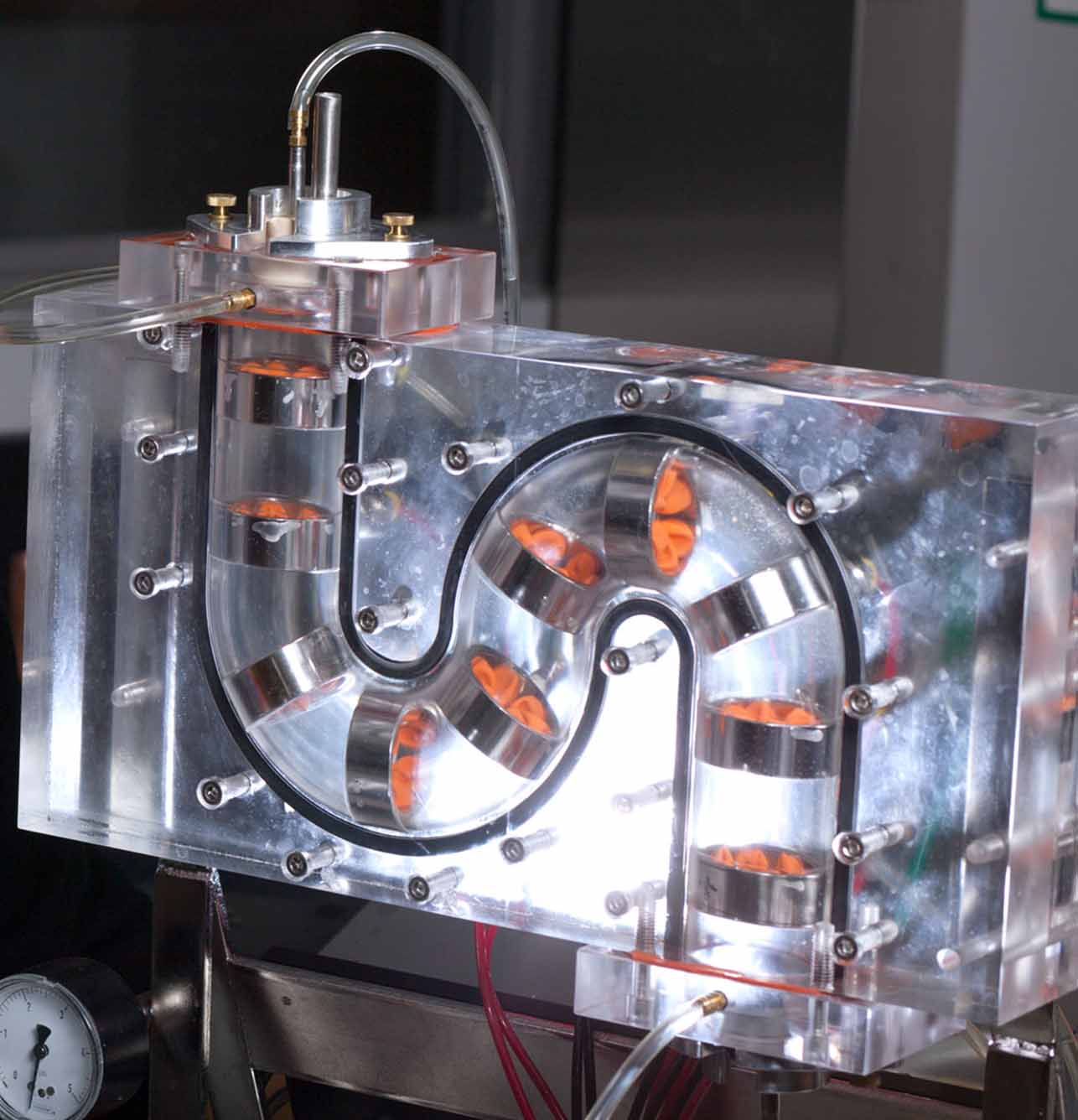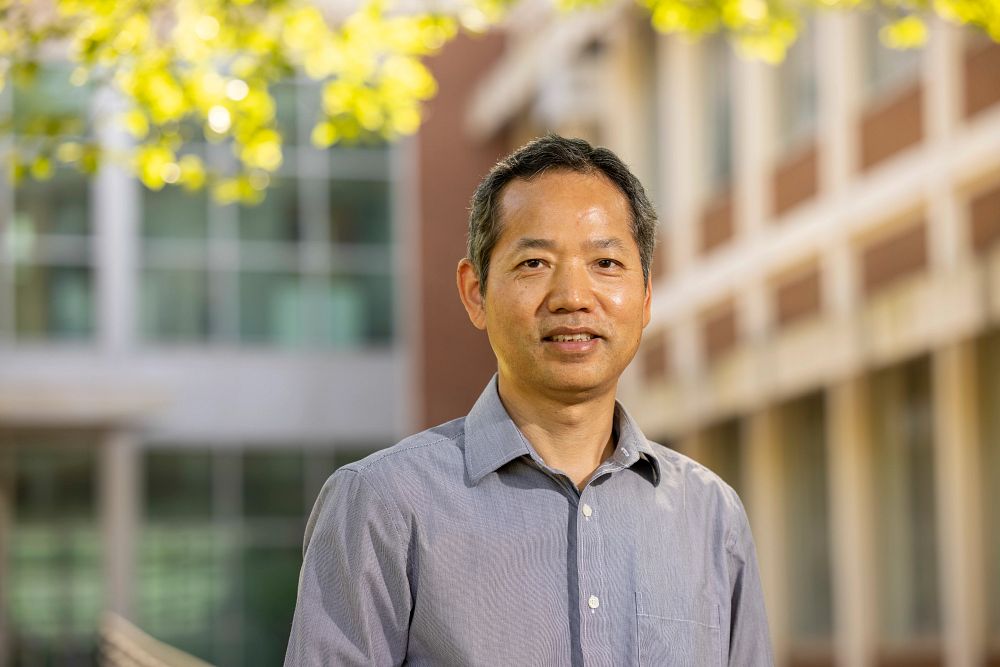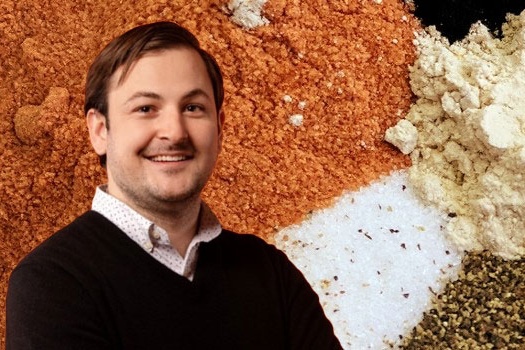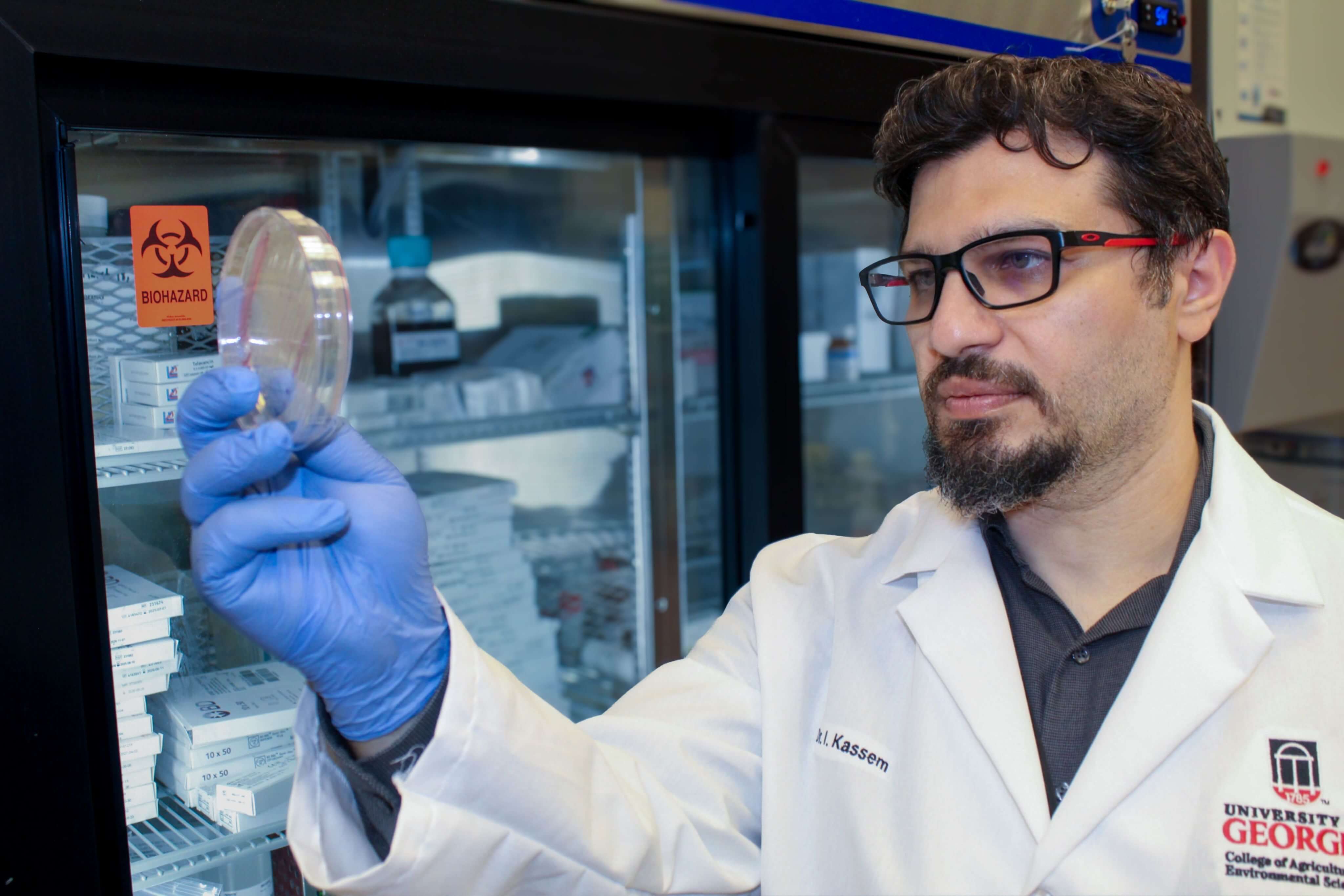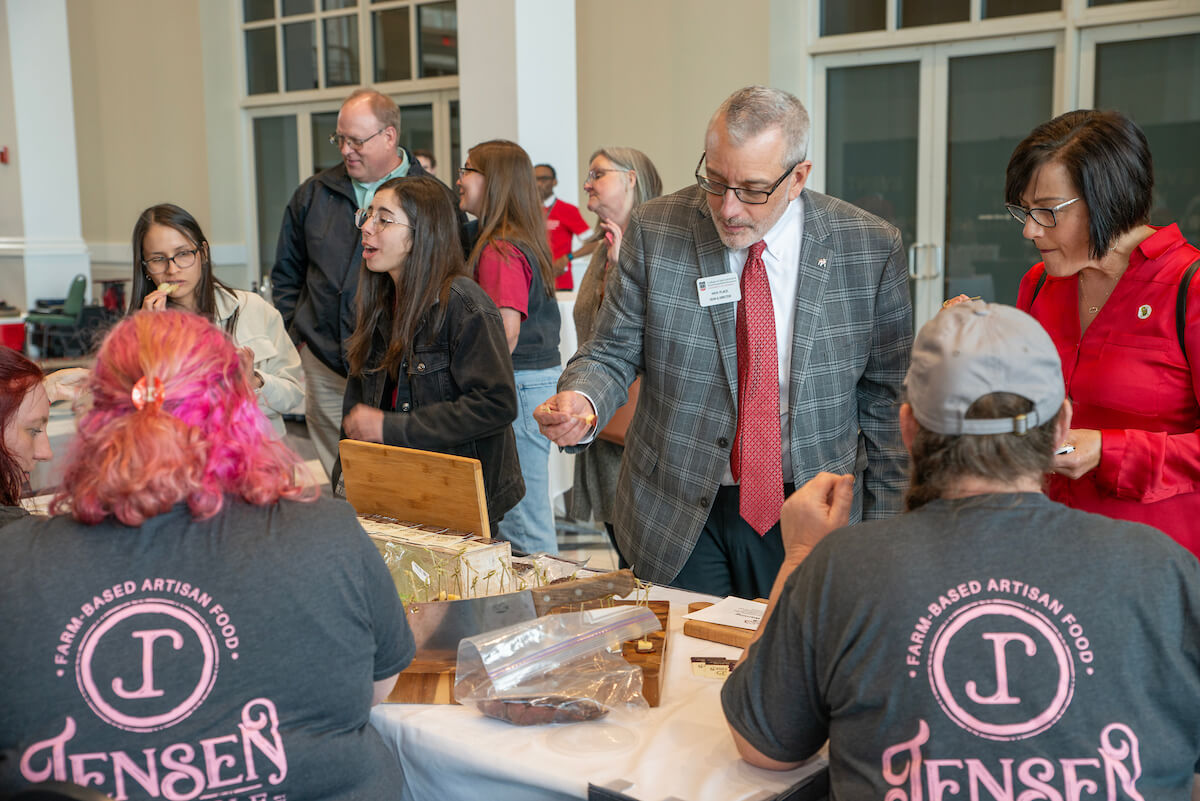University of Georgia food engineer Fanbin Kong has been awarded a more than $496,000 grant from the U.S. Department of Agriculture National Institute of Food and Agriculture to study the safety of nanocellulose and how it affects humans’ food digestion and nutrient absorption.
Nanocellulose is a light, solid substance obtained from plant matter, generally wood pulp. It is currently used in the food industry as a stabilizing agent, a functional food ingredient and in food packaging production.
“Nanocellulose has big application potential. It could be added to packaging materials to strengthen them or added to food as a dietary fiber. It also greatly increases the viscosity of foods,” said Kong, a researcher in the UGA College of Agricultural and Environmental Sciences Department of Food Science and Technology. “We now have the technology to break down cellulose (down) to a nanoscale size, called ‘nanocellulose,’ with a diameter of 1/100 nanometers. In comparison, human hair is about 80,000 nanometers in diameter.”
Scientists know the benefits of nanocellulose, but they don’t know how it behaves in the digestive system once it’s ingested.
“For example, will the very tiny particles easily penetrate into cells and tissues of the human body and become a big health concern? Will the particles remain nanoscale or will they aggregate together to increase the particle size? Will they bind to proteins, carbohydrates or enzymes and make food digestion difficult, reducing nutrient absorption? Will they impact the composition of the microorganisms that live in human digestive tracts (called ‘gut microbiota’)?” Kong said.
These are the questions Kong hopes to answer with the USDA three-year grant. For his work at UGA, Kong developed models of the human stomach and intestine that realistically demonstrate the way food breaks down in the human body. These models help him test the effectiveness of functional foods and develop new foods aimed at helping those with specific health issues.
“At UGA, we will use the artificial stomach and intestine models to study how the nanocellulose will transform its size and shape in the digestive tract, and how it will interact with protein, lipid and starch molecules (to) affect (the protein, lipid and starch molecules’) digestibility,” Kong said.
He will collaborate with scientists at the University of Missouri who will conduct cell tests to determine whether or not the nanofibers can penetrate into intestinal cells and how they will impact the gut microflora.
Tailiang Guo, a toxicologist with the UGA College of Veterinary Medicine, will use mice to validate the results from the simulation test, including examining any toxic effects caused by eating food containing nanocellulose.
“Macroscale or microscale biomaterials are generally recognized as safe and do not pose health risks to consumers. However, the biological effects and toxicity of nanoscale biomaterials cannot be predicted solely from their chemical structures,” Kong said. “This project will fill the knowledge gap about the behavior of nanocellulose during digestion and reveal any toxic effects.”
Kong’s grant funds are part of a $5.2 million investment awarded in support of nanotechnology research at 11 universities. Collectively, these projects will shed light on ways nanotechnology can be used to improve food safety, enhance renewable fuels, increase crop yields, manage agricultural pests and more. The funds were made available through the USDA Agriculture and Food Research Initiative, the nation’s premier competitive, peer-reviewed grants program for fundamental and applied agricultural sciences.
“This important grant will allow Dr. Kong to continue his long-term work to help us better understand how nanobiomaterials impact human, livestock and environmental health,” said Robert N. Shulstad, CAES associate dean for research. “This vital work will further our quest to provide a safe food supply for the nation and beyond.”
(Merritt Melancon, public relations coordinator in the UGA College of Agricultural and Environmental Sciences, contributed to this article.)

